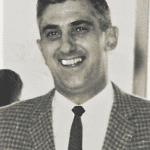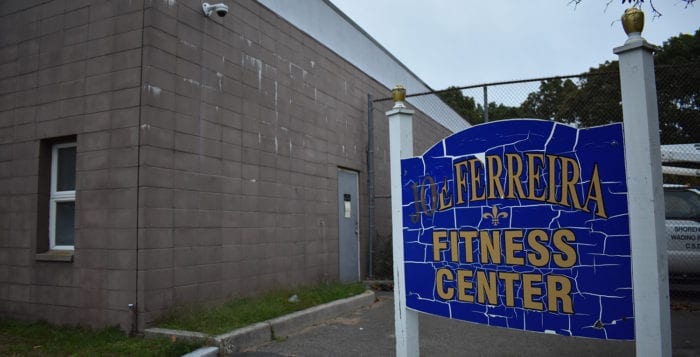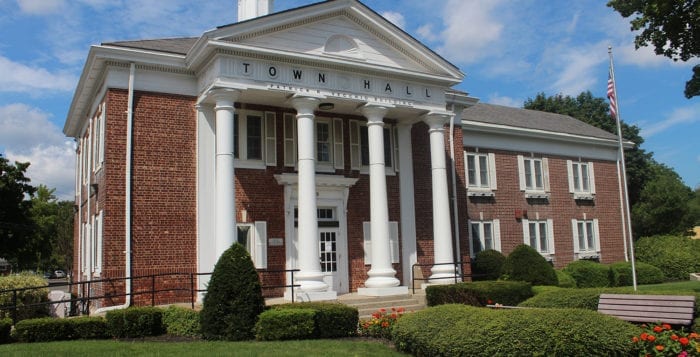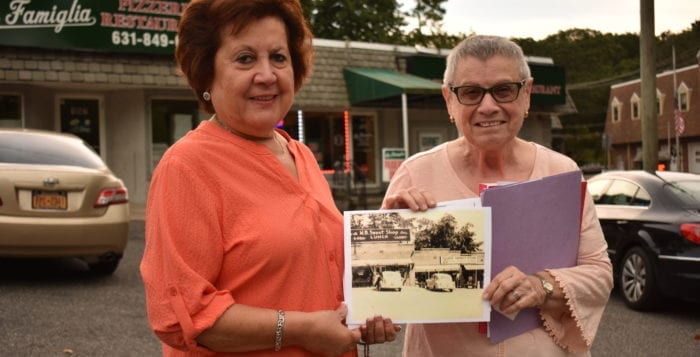 Frank Schiavone
Frank Schiavone
Frank “Francesco” Schiavone, of Brookhaven died July 31. He was 91.
Schiavone was born April 15, 1928, in Brooklyn, the son of the late Francesco and the late Lucia (Daraio) Schiavone.
He was a proud veteran, serving in the Army from 1947 to 1949. He was employed as a machinist at Kraft Mech in Bohemia. He is survived by his beloved wife, May (Benvenuta) (Calvacca) Schiavone; one loving daughter, LuAnn Schiavone of Coram; and one loving son, Ignatius (Nate) Schiavone of Bohemia. He also has five cherished grandchildren and three cherished great-grandchildren.
All services were entrusted to the Rocky Point Funeral Home, 603 Route 25A, Rocky Point. Cremation was private. An online guest book can be found at www.rockypointfuneralhome.com.
 Denise Young
Denise Young
Denise D. Young, of Ridge, died July 27. She was 40.
Young was born Oct. 19, 1978, in Plainfield, New Jersey. She was employed by Right at Home Cares in Miller Place as a home health aide. She was the beloved daughter of Ronald and Lydia (Jammal) Mihalek.
She is survived by her two cherished daughters Sierra Young of Starlight, Pennsylvania, and Mariah Young of Ridge; and two loving brothers Donald Mihalek of Winter Garden, Florida, and Daniel Mihalek of Midland, Virginia.
A Mass of Christian burial was celebrated Aug. 2 at St. Mark’s R.C. Church in Shoreham followed by a private cremation ceremony.
Services were entrusted to the Rocky Point Funeral Home, located 603 Route 25A, Rocky Point. An online guest book can be found at www.rockypointfuneralhome.com.
 Edna Kenski
Edna Kenski
Edna A. Kenski, of Mineola, died July 27. She was 87.
Kenski was born Jan. 16, 1932, in Mineola, and was the daughter of the late Richard and the late Margaret (Kammerer) Rueb.
She was preceded in death by her beloved husband, Frank Kenski in 1999. She was employed as a manager by Verizon in Hempstead.
She is survived by her loving children Karen (Carmine) Abbatiello of Ridge and Frank (Kathy) Kenski of Selden. She is also survived by seven cherished grandchildren and 13 great-grandchildren.
Celebration of the Mass of Christian burial was held Aug. 1 at St. Anthony of Padua R.C. Church in Rocky Point, with a burial following at Holy Rood Cemetery in Westbury.
Services were entrusted to the Rocky Point Funeral Home, located 603 Route 25A, Rocky Point. An online guest book can be found at www.rockypointfuneralhome.com.
 Donna Marie Durney
Donna Marie Durney
Donna Marie Durney, of Rocky Point, died July 18. She was 53.
Durney was born Feb. 6, 1966, in Brooklyn, the daughter of Clifford and the late Mildred (Faucci) Dean.
She is survived by her beloved husband, James Durney; her loving children, including her daughter, Taylor Durney, and her son, Jack Durney. She was the dear sister of two brothers, James Dean and Clifford Dean.
Cremation was held private, while a memorial was held at the Rocky Point Funeral Home, located at 603 Route 25A, Rocky Point. An online guest book is available at www.rockypointfuneralhome.com.
 Anne Davis
Anne Davis
Anne “Anna” Davis, of Hawthorne, died July 1. She was 90.
Davis was born June 8, 1929, in the Bronx, the daughter of the late Harry and the late Fay (Foxman) Dorfman.
She was employed by New City schools as a teacher.
She is survived by her son, Warren Davis of Yonkers; sister-in-law, Madelyn Dorfman of Ridge; her niece, Debra Botens of Norwalk, Connecticut; and her nephew, Robert Dorfman of Holbrook. A memorial service was held July 27 at Rocky Point Funeral Home, located at 603 Route 25A, Rocky Point. Cremation was private.
An online guest book is available at www.rockypointfuneralhome.com.
 David Krohmer
David Krohmer
David Krohmer, of Rocky Point, died July 19. He was 58.
Krohmer was born Feb. 18, 1961, in Port Jefferson, the son of Edward and the late Nora (O’Connor) Krohmer.
He was employed by Adchem in Riverhead as a machinist.
He is survived by his father, Edward Krohmer of Port Jefferson; sister, Donna Famiglietti of Rocky Point; and brother, Edward Krohmer of Miller Place.
Memorial visitation was held July 25 at the Rocky Point Funeral Home, located at 603 Route 25A, Rocky Point. Cremation was private.
An online guest book can be found at www.rockypointfuneralhome.com.
 Joanne Lucille Boeger
Joanne Lucille Boeger
Joanne Lucille Boeger, of Ridge, died July 11.
Boeger was born in Boston March 30, 1934, and graduated salutatorian from Abbington High.
She grew up in Quincy, Massachusetts. She married Richard M. Boeger, after meeting in Hyannis. They raised four children in Massapequa Park, where they were members of St. David’s Lutheran Church. She created Heptas, a women’s educational self-improvement group. She became a life insurance agent for Aid Association for Lutherans in the 1970s and was the first woman to hold that position in the Long Island agency.
Boeger and her husband, Dick, retired to Sutton, West Virginia, where she began painting in many various mediums, settling on water colors as her favorite. She also became an avid gardener and was president of Judy’s Garden Club in Sutton. She loved reading (mostly history), birding and wildlife magazines. She was a member of the Suffolk Chapter of the DAR and the Rich Family Association. She returned to Long Island in 2012 and lived in Leisure Knoll in Ridge. Recently, she had been living with her daughter and granddaughter in Washington state, returning to Ridge for vacations and family events. She had returned to New York for one such event but passed away in her sleep in her own home. She will be buried in Hingham, Massachusetts, in a family plot with her mother, paternal grandparents and great-grandparents.
She is survived by four children, Lynne Plewa of Bellevue, Washington, Richard M. Boeger Jr., of Redlands, California, Bonnie J. Boeger of Sound Beach and Wade Preston Boeger of Pennsylvania; and her sister, Betty Tuttle of Columbus, Indiana. She is also a cherished grandmother of seven, and great-grandmother of one.
Her family is proud of her and her lifelong love of learning, history, the arts and nature.
In lieu of flowers, the family asks people to make donations in her name to the Alzheimer’s Association or another deserving charity.
Services were entrusted to the Rocky Point Funeral Home, 603 Route 25A, Rocky Point. Cremation was private.
An online guest book can be found at www.rockypointfuneralhome.com.
 Matthew S. Procelli
Matthew S. Procelli
Matthew S. Procelli of Bethesda, Maryland, formerly of Port Washington, East Northport and Fort Salonga, passed away peacefully on July 28 at 93 years of age. Loving husband of the late Marion Mahoney-Procelli; beloved father of Robert; adoring father-in-law of Mary; cherished grandfather of Michael, David and Nicholas; and great-grandfather of Josephine. Procelli had a long career at Long Island Lighting Company as vice president of industrial relations and vice president of personnel. He was a visiting professor at Stony Brook University business school. Visitation was held Aug. 1 at Nolan Funeral Home in Northport. Funeral Mass was celebrated Aug. 2 at St. Anthony of Padua Church, East Northport. Interment was at Mount St. Mary’s Cemetery, 172-00 Booth Memorial Ave. in Flushing. In Matthew’s memory donations to Alzheimer’s Foundation of America (www.alzfdn.org) are appreciated.
 William H. Davenport
William H. Davenport
William H. Davenport of Greenlawn died at 83 years of age. He was the manager of Lewis Oliver Dairy, a community farm in Northport. Davenport was the beloved husband of the late Jean; father of Laura Jean Michta, William H. Davenport, III (Thami) and Kenneth Davenport (Barbara); fond brother of Donna Scarola (the late Capt. Mike), Robert Davenport (Pat), Joseph Davenport (Peggy) and Larry Davenport (Grace); brother-in-law of Diane Cobb (John); dear grandfather of Ashley Michta, John Michta, Matthew Davenport and Christopher Davenport; and great-grandfather of R.J. and Kaylee. Funeral services were held Aug. 10 and 11 at Nolan Funeral Home in Northport with the Rev. Bette Sohm officiating. In Bill’s memory, donations to Friends of the Farm Animal Sanctuary on Burt Avenue in Northport, NY 11768 (www.lewisoliverfarm.org) would be appreciated.
 George W. Wild Jr.
George W. Wild Jr.
George W. Wild Jr. of East Northport died on Aug. 11 at 88 years of age. Wild was the devoted husband of the late Marie; loving father of Cheryl Galasso (Chris), Lori Horvat (Doug) and the late Wayne; dear grandfather of Christopher, Danielle (James), Victoria and Sabrina; and fond great-grandfather of James. Services were held at Nolan Funeral Home on Aug. 14 and 15. A funeral Mass was celebrated Aug. 16 at St. Anthony of Padua Church in East Northport. Burial was held at St. Patrick’s Cemetery in Huntington. In George’s memory, donations to Memorial Sloan Kettering (www.mskcc.org) or Joslin Diabetes Center (www.joslin.org) would be appreciated.









 Frank Schiavone
Frank Schiavone Denise Young
Denise Young Edna Kenski
Edna Kenski Joanne Lucille Boeger
Joanne Lucille Boeger Matthew S. Procelli
Matthew S. Procelli William H. Davenport
William H. Davenport George W. Wild Jr.
George W. Wild Jr.


















